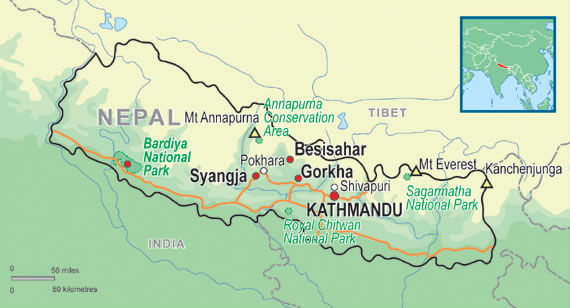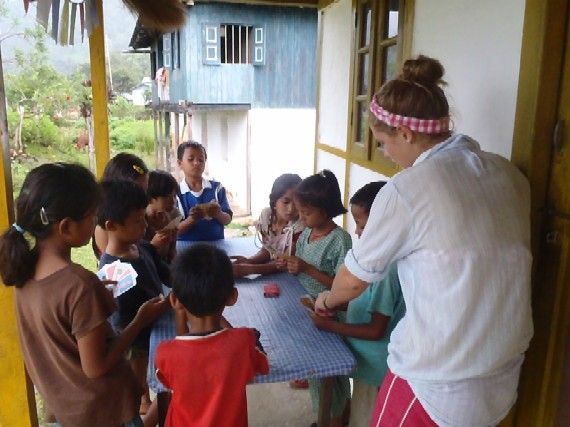About Nepal
Majestic icy peaks but a warmth of welcome that melts you instantly. Nepal has few natural resources other than its startling beauty and its people.
Huge mountains dominate tiny terraced fields, where 80% of the people grow not quite enough food to live on. In steep-sided valleys are some mighty rivers and fast-growing towns, which offer electricity, water, medicine and schools.
It is here that our volunteering opportunities in Nepal and the AV Foundation work with a local NGO to support rural government schools and schools for the children of ex-Gurkha servicemen in western Nepal.
Nepal Gap Year Program
By volunteering in Nepal with AV you can help teach English in poor rural schools in western Nepal.
Live in a self-catering house, and walk to school each day. You will be well known in the town, a resident and friend rather than a passing tourist.
Nepal’s altitude and the height of its biggest mountains have the most direct affect on its weather. It is quite cold in January/February but starts warming up towards the end of February.
The very best weather is from October to December and in March or April, when the red rhododendrons blaze across the hills. Travelling in the main parts of India can get hot in May/June (up to 48 degrees Celsius) and Nepal gets wet during the monsoon (late June to September).
Tihar (Festival of Lights) is moveable but usually in October/November.
There are Hindu and Buddhist festivals in the spring and Holi (Festival of Colour) is in February/March.
Syangja has a small medical facility, but for more major treatments we will get you to Kathmandu or Pokhara.
Nepal is not expensive unless you stay in smart hotels. Likewise in India backpackers can live quite well for about £20 a day, and travel by train is cheap.
From Kathmandu to Syangja is about six hours. From Syangja to Pokhara is two to three hours. In Syangja and Pokhara there are internet cafes, ATMs, and doctors.
- Malaria Area Only in the Terai
- Wet Season (Global warming permitting!) Monsoon late Jun-Sep
- Internet cafes Most towns, but slow!
- Electricity Type 210-240volt
- Plugs Old UK 3-pin, round pin
- In Country Reps KK
- Language Nepali and English
- “Hello!” “Namaste!”
- Money Nepalese Rupees
- Visa or MasterCard Visa


